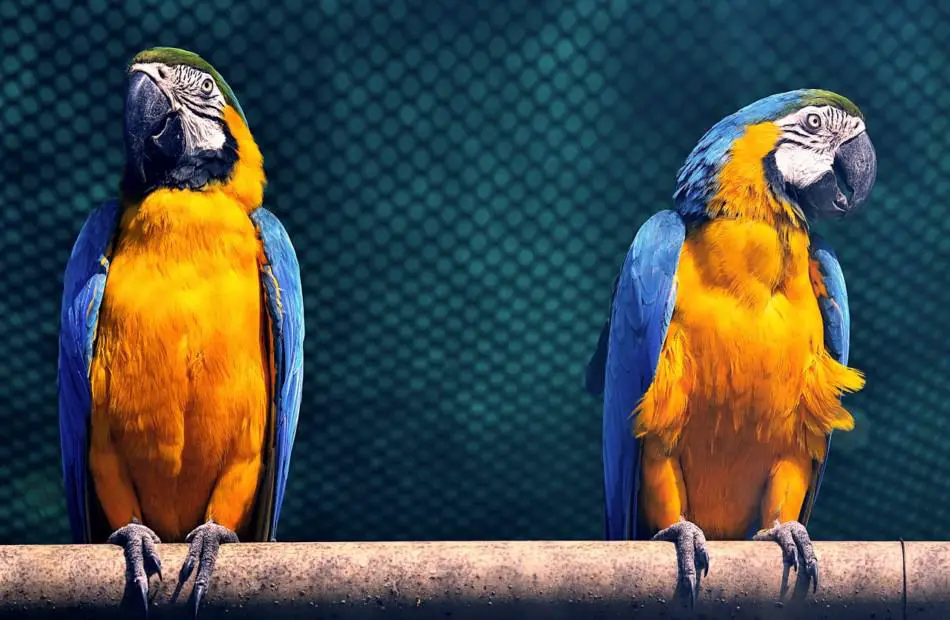 It seems strange to see a parrot bobbing its head up and down and totally in tune with the music. Is it because they are just trying to avoid hearing the music or are they getting caught up in the tune being played?
It seems strange to see a parrot bobbing its head up and down and totally in tune with the music. Is it because they are just trying to avoid hearing the music or are they getting caught up in the tune being played?
Why do Parrots Bob their Heads to Music? Parrots bob their heads to music because they are enjoying themselves. Parrots do have musical preferences and they bob to the beat because they are pleased. Bobbing of the head represents that they are in a good frame of mind. Each parrot does have its own preference though regarding the type of music.
Is it Possible that a Parrot is Angry and that it Dislikes the Music?
It is possible that a parrot is actually disliking the music that it is hearing, but it is more likely that they are enjoying it. Parrots pop their heads for numerous reasons, the main reason is that they are excited. I personally know that sometimes music can really get on my nerves. Just imagine how a parrot feels about aggravating music that they have zero control over. If you have noticed that your parrot is stressed, I recommend that you destress them using well constructed wooden blocks along with tearing toys, click here to view pricing on Amazon on a great multi-colored option.
Here is an example that illustrates a change in behavior due to a frustrating situation :
A cat can be very content and then suddenly just their reaction to situation that was once positive. For instance, you could be patting them and then they suddenly decide that they are not enjoying it and they will lash out at you. A parrot may suddenly decide that they have had enough of a particular tune, and their head bobbing during the music may just out of frustration and a high anxiety level.
How can You Tell that a Parrot Is Bobbing Its Head Because it Really Likes the Music?
If you are aware of the body language of your personal parrot, you will be able to tell that she is happy and content during her bobbing sessions with certain music. Head popping, as mentioned, is exhibited during times of high emotion for a parrot.
If your parrot is content, they will show other signs while popping their head to the beat. For instance, here are some examples of additional body language that can occur along with the bobbing action:
- Mimicking the music by whistling.
- Singing along with the music.
- Talking during the music but along with the beat
- Chattering in general
Are Parrots Bobbing and Grooving to Music Because They Are Mimicking?
Parrots do mimick and they do it readily. They can spurt out a series of words that seem to make sense. Do they really know what it is that they are communicating, I feel no. It is a way of communicating, of fitting in.
Is head bobbing to music by Parrots a form of mimicking? It may seem as if it is especially if they are singing the words to the songs at the same time. They are not mimicking the dance moves of humans, they are adding in dance moves by lifting and lowering their feet, and by lowering and raising their heads quickly.
This bobbing of the head is something that changes depending on the music that a parrot is exposed to. Every parrot is different. They are actually clever enough to create a different dance sequence along with head rolls and bobs for each song played. Patel, a neuroscientist has published papers on spontaneous dance and head bobbing by certain parrots, was amazed that the parrot that he was studying could do something that our closest relatives, the primates are not able to achieve. They cannot move to a beat.
The ability to head bob and move to a beat by a parrot was noticed by a bird rescue center’s director. This parrot, named Snowball was not mimicking the director’s movements even though she would flap her arms to the music which is something that a bird could easily accomplish. This parrot was able to change its dance routine and head movements at will depending on the music beat. The movements were completely different from that of the director.
Is it Possible that Parrot Bobs to the Beat for the Added Attention?
It is possible that the bobbing by a parrot is done to attract attention. Parrots are very social creatures. They want to fit into their environment and they wish to have others notice them. They are smart birds and they can become attached to humans. Dancing and talking and head bobbing is going to give them the attention that they are seeking.
I have not found any studies online illustrating how entertained a parrot can be when they are left alone. They are excited by having others around and observing them. Add in some music that they like and their excitement level increases.
If you find that your active parrot needs to take a break, I recommend that you change the environment for a short period of time by taking them for a stroll in a travel cage, I recommend the Colorday lightweight cage, click to see pricing on Amazon.
I also read that besides just having humans around, parrots actually need to feel as if they are loved and praised. For instance, when training a parrot is best to praise them when they pronounce words adequately. It does increase the likelihood that they will continue to talk in a very clear and concise way. In other words, if you praise your parrot when they are moving to the music, perhaps singing, and bobbing to the rhythm, you will end up enhancing these abilities.
What type of Music Does the Average Parrot that is Following by the Bobbing of the head?
If you were to do a search on youtube for birds and other animals that dancing to music, you will notice that there are a lot of species of parrots that are bobbing their heads to music. You will also remark that they have different tastes musically.
Studies have shown that they do not seem to like dance music. It is probably because they find it to be too distracting and unnerving. Here is a shortlist of the types of music or even artists that certain studies by Dr. Peron, from the University of Lincoln, had revealed:
- rock music
- folk music
- electronic dance music (which left them distressed)
- classical
- rhythmic (U2, UB40)
Dr. Peron also experimented with a touchscreen containing two songs that his parrots could use to pick their favorites to play again and again. He stated that this tactic would be a great way for a parrot owner that has a parrot that bobs to the music to pick the right type of music for their particular bird.
Bobbing to Music by Parrots Proves that they are Utilizing Which Areas of the Brain?
It is rare to see animals reacting to music. Parrots have been proven to be intelligent. They have problem-solving abilities and when they desire something, they will make sure that their wants are communicated. So it is not surprising that music seems to be affecting various segments of their brains.
The movement to music, especially the head movements, could indicate that they are using an area of the brain in the forebrain. This region in humans controls motor control and vocal abilities. It is not a stretch to conclude that this area is being activated by Parrots while they are listening to certain types of music.
Parrots seem to have a heightened development of neural paths that allow them to adjust to even various tempos in music.
Do Some Parrots Move to the Beat Solely Due to Training?
The most famous parrot that danced and bobbed its head to the beat was Snowball. It is not clear whether or not training was involved directly or indirectly. The researchers that studied this bird thought that perhaps the previous owner had trained Snowball to move to music.
What is curious about Snowball’s ability is that this bird was able to keep the beat of music to a degree that a human is able. With training, this level of ability could not be accomplished. For instance, there are dogs that have been trained to dance to music, but their rhythmic moves do not coincide directly with the music’s beat. They seem to be familiar with certain music only. Parrots can adapt to new music in some cases and even create new head movements that they had not used previously.
Nevertheless, one can put their parrot on the right track by starting to train them to move to music. They are impressionable and they love to mimic in order to be accepted. However, with time they probably will add in completely unique head tosses or movements.
If your parrot seems to be slightly stressed during training sessions, add in a cage heater that will relax them. I recommend the K&H Snuggle Up Bird Warmer, click here to see the current price on Amazon.
